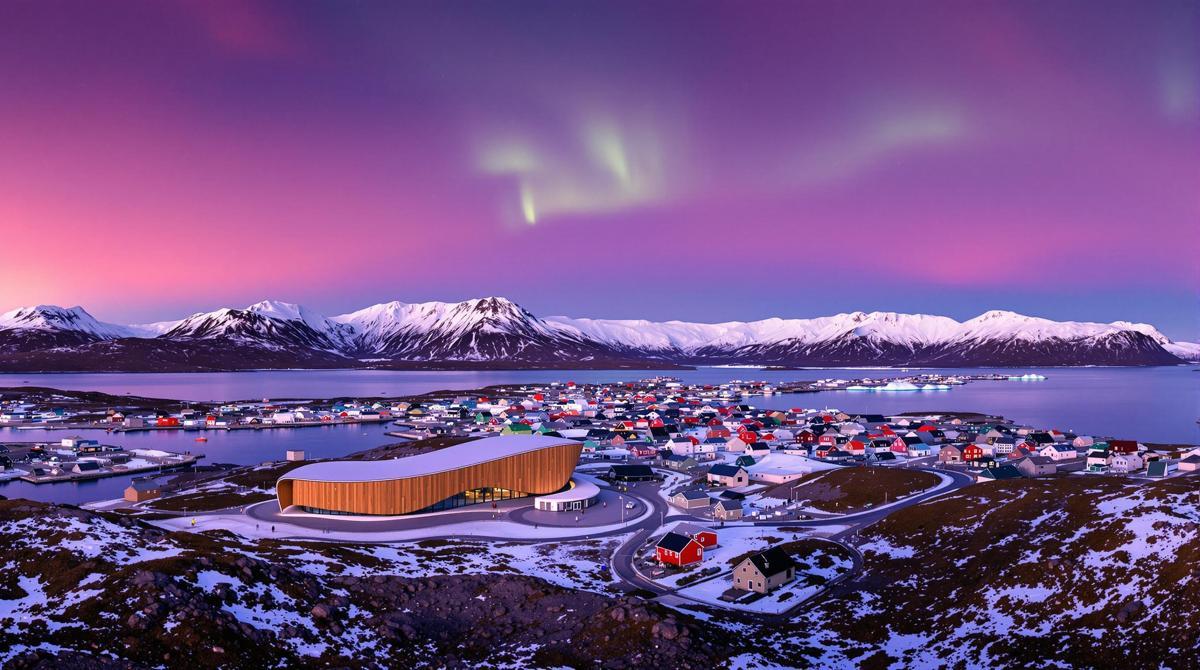Perched at the edge of the Arctic Circle lies Nuuk, the world’s northernmost capital city and a treasure trove of Inuit heritage amidst breathtaking Arctic landscapes. With just 18,000 residents, this remote Greenlandic metropolis defies expectations, blending ancient traditions with surprising modernity in one of Earth’s most extreme environments.
A capital city like no other
Nuuk stands as a vibrant contradiction – a capital city smaller than many suburban neighborhoods. As the governmental and cultural heart of Greenland (an autonomous territory within Denmark), this compact urban center offers visitors a rare glimpse into life at the top of the world. The city’s colorful houses cascade down rocky hills toward dramatic fjords, creating one of the most visually striking urban landscapes on Earth.
Ancient roots in a modern world
Founded in 1728 by Danish-Norwegian missionary Hans Egede, Nuuk’s history runs much deeper through its Inuit foundations. The Greenland National Museum houses the famed Qilakitsoq mummies – perfectly preserved 15th-century Inuit hunters discovered in 1972. These remarkable finds provide a direct connection to the indigenous populations who mastered survival in this harsh environment centuries before European arrival.
Katuaq Cultural Center: Where tradition meets innovation
The wave-like wooden façade of the Katuaq Cultural Center stands as Nuuk’s architectural crown jewel. Inspired by the dancing northern lights and Greenland’s undulating landscapes, this modern landmark hosts film screenings, art exhibitions, and performances celebrating Inuit culture. The center embodies Nuuk’s commitment to preserving heritage while embracing contemporary expression.
“In Nuuk, we don’t just preserve our past – we live it daily while creating our future,” explains Tukumminnguaq Olsen, a local cultural guide. “Our traditions aren’t museum pieces; they’re evolving expressions of who we are.”
The majestic Nuuk Fjord system
Just beyond the city limits stretches one of the world’s largest fjord systems, a labyrinth of icy waterways and towering mountains. Boat tours reveal calving glaciers, breaching whales, and abandoned settlements scattered across this pristine wilderness. The fjord offers a glimpse into Greenland’s geological might while demonstrating why remote natural wonders transform travelers in profound ways.
A cuisine born from necessity and ingenuity
Nuuk’s cuisine tells the story of human adaptation in extreme conditions. Traditional dishes feature arctic ingredients like seal, whale, reindeer, and musk ox – staples that sustained indigenous populations for generations. At Restaurant Sarfalik, these ancient foods meet modern culinary techniques, offering a gastronomic journey through Greenland’s history that rivals Bangkok’s vibrant food scene.
Colonial Harbor: Where history comes alive
The historic Colonial Harbor district features brightly painted wooden houses from the 18th century, including the striking red Hans Egede House. This preserved neighborhood offers a tangible connection to Nuuk’s colonial past and its gradual journey toward greater autonomy within the Danish realm. The area’s time-worn beauty evokes the same sense of history as Switzerland’s medieval villages.
“Our Colonial Harbor reminds us of our complex history – the challenges and triumphs that shaped today’s Greenland,” notes historian Minik Rosing. “Each building tells a chapter in our ongoing story.”
Northern lights: Nature’s greatest light show
From September through April, the night skies above Nuuk erupt in swirling curtains of green, purple, and blue as the aurora borealis dances overhead. This natural phenomenon draws visitors seeking one of Earth’s most magical displays. The experience of witnessing these lights over Nuuk’s mountain-ringed harbor creates memories that rival seeing Earth’s most alien landscapes.
A thriving arts scene at the top of the world
Despite its isolation, Nuuk boasts a vibrant creative community. The Nuuk Art Museum showcases both traditional Inuit carvings and contemporary works addressing climate change, cultural identity, and Arctic life. Local artists draw inspiration from their unique position between ancient traditions and global influences, creating distinctively Greenlandic expressions that captivate international audiences.
Paradise Valley: Wilderness at the city’s edge
Just beyond Nuuk’s urban core lies Paradise Valley, an untouched wilderness area offering hiking trails with panoramic views across mountains and fjords. This accessible natural playground allows visitors to experience Greenland’s raw beauty without extensive expedition planning. Like Seychelles’ hidden beaches, Paradise Valley rewards those willing to venture just beyond typical tourist paths.
Nuuk defies easy categorization – simultaneously remote yet connected, ancient yet progressive, tiny yet globally significant. In this capital city at the edge of habitation, visitors discover not just the heart of Greenland but a window into humanity’s remarkable ability to thrive in Earth’s most challenging environments.
